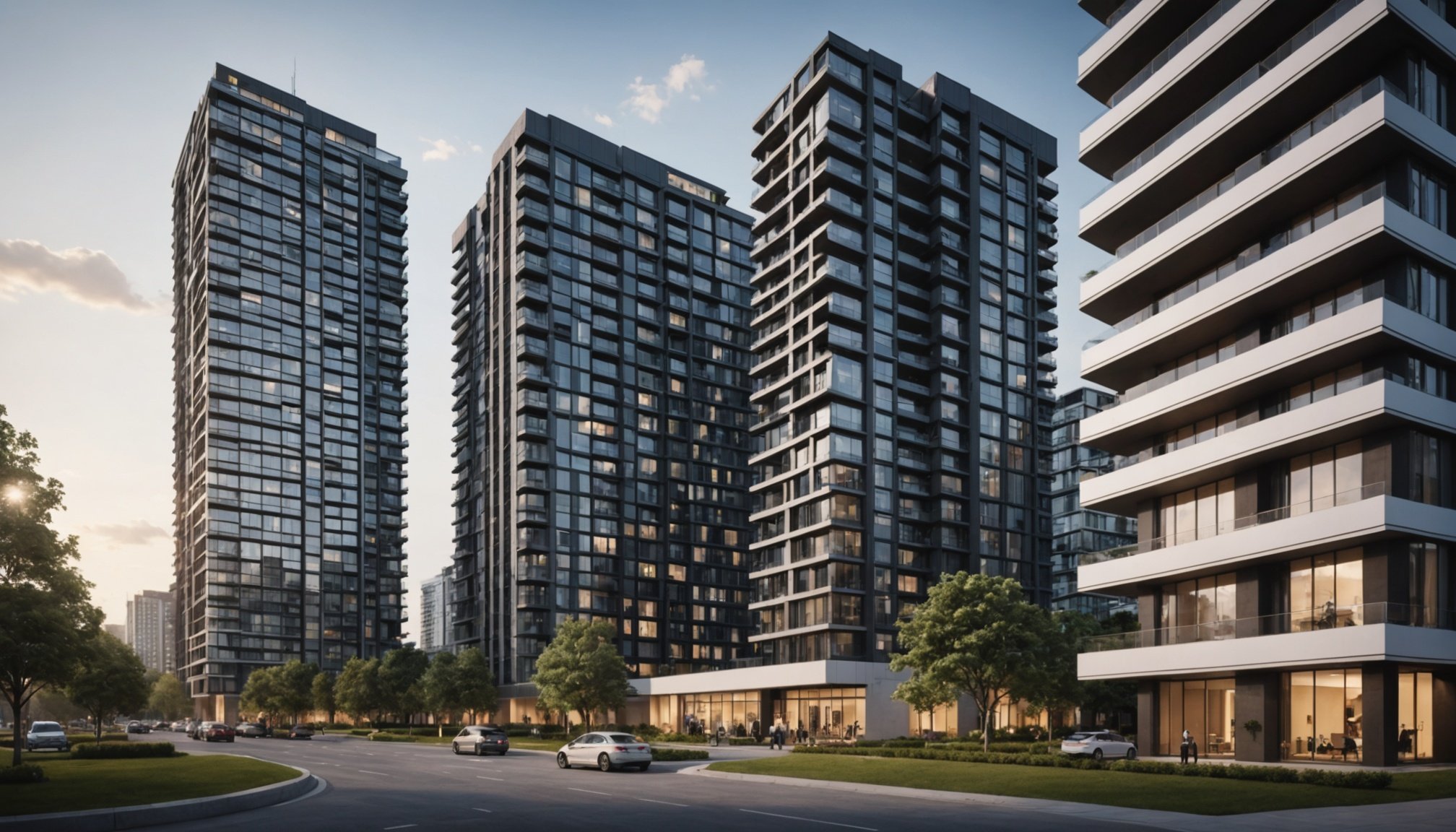Overview of Security Challenges in High-Rise Residential Buildings
High-rise buildings present unique security challenges due to their complex architecture and dense population. Common security vulnerabilities in these structures include unauthorized access, insufficient surveillance, and inadequate emergency response protocols. A building’s design and architecture significantly impact its safety measures. Narrow corridors and insufficient exits can hinder evacuation planning during emergencies, while open-access areas can increase the risk of unauthorized entry.
Recent statistics reflect the growing concern over safety in residential towers. Data indicates a rise in security incidents, ranging from petty thefts to significant breaches, emphasizing the need for robust systems to ensure resident safety. Understanding these vulnerabilities and their root causes is crucial for developing effective prevention strategies.
Additionally, the integration of modern technology plays a vital role in mitigating these risks. Innovations in monitoring systems and surveillance technology can enhance security measures, offering real-time alerts and data analytics for better incident management. By addressing and understanding the specific challenges faced by high-rise buildings, stakeholders can implement comprehensive safety solutions tailored to protect residents effectively. The future of residential safety relies on adapting to these evolving needs and embracing technology-driven advancements.
Smart Security Systems: Revolutionizing Building Safety
High-rise buildings are increasingly integrating smart security systems, marking a significant shift in building safety. Technologies such as biometric access control and mobile applications streamline resident entry, enhancing security and convenience. By using unique biological markers, biometric systems offer a robust line of defence against unauthorized access, preventing incidents before they occur.
Also read : Mastering Regulatory Compliance for UK Coastal Real Estate: Key Steps and Essential Insights
Mobile apps allow residents to control access from anywhere, offering real-time updates about people entering or leaving the building. These technology innovations provide seamless management and ensure building security fits individual lifestyles.
Case studies show the transformative impact of smart technologies. For instance, residential towers implementing automated systems report reduced security breaches and improved resident satisfaction. Furthermore, the integration of smart technology into existing frameworks doesn’t just bolster security; it simplifies administrative tasks and cuts down on operational costs.
The benefits of automated security systems are multifaceted. Aside from bolstering security measures, they also improve system efficiency and enhance user experience. By focusing on these innovations, high-rise buildings can better safeguard residents while adapting to technological advancements. Smart security enables proactive management, offering a future-ready solution to traditional security challenges.
Surveillance Technology Advancements
Surveillance technology in high-rise buildings has evolved significantly, integrating features that enhance safety and monitoring efficiency. Modern CCTV enhancements now incorporate high-definition cameras and panoramic views, providing comprehensive coverage and reducing blind spots. The effective use of monitoring systems is crucial, especially in densely populated structures, as it aids in promptly addressing security breaches.
One of the more transformative developments in this domain is the incorporation of AI and analytics. These advanced systems can analyse video feeds in real time, identifying unusual activities or potential threats swiftly. This not only increases the precision of detection but also helps in resource allocation, ensuring security personnel is dispatched efficiently to critical areas.
Real-world examples highlight the impactful nature of these enhancements. Some high-rise residential towers have reported a significant decrease in unauthorized access events after upgrading their surveillance systems. Enhanced CCTV and monitoring technologies not only bolster security but also significantly contribute to resident safety by providing a proactive approach to potential security incidents. These advancements demonstrate how modern technology can address traditional security challenges in the high-rise residential environment, offering robust solutions tailored to urban safety needs.
Fire Prevention and Safety Innovations
Innovations in fire prevention and safety are crucial for high-rise residential buildings, greatly enhancing resident protection. Modern fire detection systems, such as smart smoke detectors, play a vital role in early threat identification by communicating alerts across networks. This rapid response capability helps to prevent escalations and safeguards residents efficiently.
Safety innovations extend to advanced suppression systems. For instance, water mist systems are more effective and less damaging than traditional sprinklers, as they control fires while minimising water damage. These systems harness a fine mist, depriving fire of oxygen and cooling flames simultaneously.
Integrating new building materials has also elevated safety standards in urban residences. Fire-resistant materials like gypsum boards and intumescent coatings prevent structural damage, even during severe fires. The adoption of these materials ensures buildings meet rigorous safety codes and enhances overall resilience.
Success stories abound in urban settings due to these advancements. Many high-rise buildings employing modern safety measures report a significant reduction in fire-related incidents, illustrating the efficacy of combining innovative detection, suppression, and construction techniques. These approaches underscore the importance of continuous evolution in safeguarding urban residences against fire threats.
Importance of Emergency Response Systems
The integration of effective emergency response systems is paramount in high-rise residential buildings. These systems are vital for ensuring the safety and wellbeing of residents during emergencies. Properly designed safety protocols can significantly reduce potential risks.
Evacuation planning is a crucial component of emergency response, demanding meticulous attention to detail. Effective protocols should account for building design, ensuring that exits are accessible and corridors are clear. This comprehensive approach helps in swift evacuations, minimising panic and ensuring a systematic response.
The use of technology is critical in enhancing response times during emergencies. Real-time alert systems provide timely information to residents and first responders, facilitating a coordinated effort. These systems can activate life-saving measures, such as automated unlocking of emergency exits and guiding lights, to streamline the evacuation process.
Implementing robust emergency response systems aligns with the broader goal of increasing resilience in urban dwellings. High-rise buildings equipped with these innovations ensure a safer environment for their occupants. The evolution of safety strategies in high-rise architecture continuously adapts to emerging challenges, making resident safety a primary focus. As technology advances, so will the effectiveness of emergency management strategies.
Comparative Analysis of Traditional vs. Innovative Security Measures
The shift from traditional to innovative security measures in high-rise buildings marks a significant advancement in safeguarding resident safety. Historically, security relied on basic systems like keyed entries and manual patrols, which are limited in scope and effectiveness. These methods often fall short in addressing the sophisticated threats facing modern urban dwellings.
In contrast, innovative security integrates technologies like smart locks, biometric access, and automated surveillance systems. These solutions provide real-time monitoring and control, significantly improving the precision of threat detection and response. They also seamlessly integrate with other building systems, providing a comprehensive security framework.
A side-by-side comparison reveals stark differences: traditional systems are reactive and often leave gaps, while innovative technologies offer proactive protection strategies, closing vulnerabilities efficiently. Security assessments highlight that modern measures adapt to ongoing threats, whereas outdated practices struggle with evolving challenges.
Best practices for adopting innovative security emphasize thorough security assessments to tailor solutions to specific building needs. Recommendations include blending technologies with resident education and engaging regularly with stakeholders to ensure adherence to the latest security standards. This forward-thinking approach paves the way for resilient, future-ready residential security.
Practical Implementation of Security Innovations
Implementing security innovations in high-rise buildings requires systematic project management and active resident engagement. Here’s a concise guide to successfully adopting these advanced solutions:
Step-by-Step Implementation Process:
-
Assessment and Planning: Conduct a thorough security assessment to identify vulnerabilities and needs. This foundational step ensures tailored solutions that address specific safety concerns.
-
Technology Selection: Choose the right security innovations that mesh with the building’s architecture and resident lifestyle. Consider factors like cost, scalability, and compatibility with existing systems.
-
Strategic Installation: Implement new technologies in phases, minimizing disruptions. Ensure the integration of systems, such as automated security and surveillance, is seamless and effective.
-
Training and Education: Engage residents with regular information sessions on new security measures. Training programs guard against misuse and encourage compliance with updated protocols.
Resident Involvement and Feedback:
Fostering resident engagement is crucial. Feedback mechanisms, such as surveys and community meetings, help tailor security strategies to occupant needs, enhancing overall resident safety.
Resources for Building Managers:
Building managers should leverage comprehensive project management tools and collaborate with security firms to ensure a smooth transition to modern security frameworks. Ongoing maintenance and updates are vital to sustain the efficacy of these innovations over time.
Future of Security in High-Rise Residential Buildings
The future of security in high-rise buildings is poised for transformative changes as emerging technologies continue to advance. As urban environments evolve, security systems must adapt to new challenges and opportunities. Key technologies on the horizon include advanced AI-powered surveillance, predictive analytics, and integrated smart home systems that enhance both security and convenience for residents.
Upcoming technologies such as Internet of Things (IoT) devices will enable buildings to leverage data-driven insights, providing real-time responses to potential threats. These innovations reduce response times and increase the accuracy of incident detection, ensuring resident safety remains a top priority.
Industry experts predict that future security measures will heavily incorporate machine learning and biometric authentication, offering bespoke security solutions tailored to resident behaviour patterns. This will result in proactive security approaches, where systems anticipate and respond to risks before escalation.
Emerging trends also suggest a shift towards holistic security ecosystems that combine physical and digital elements. Insights from experts highlight the potential of cloud-based platforms that facilitate efficient management and coordination of security assets across sprawling urban landscapes. This integration ensures robust, scalable solutions that address the complexities of high-rise living.

